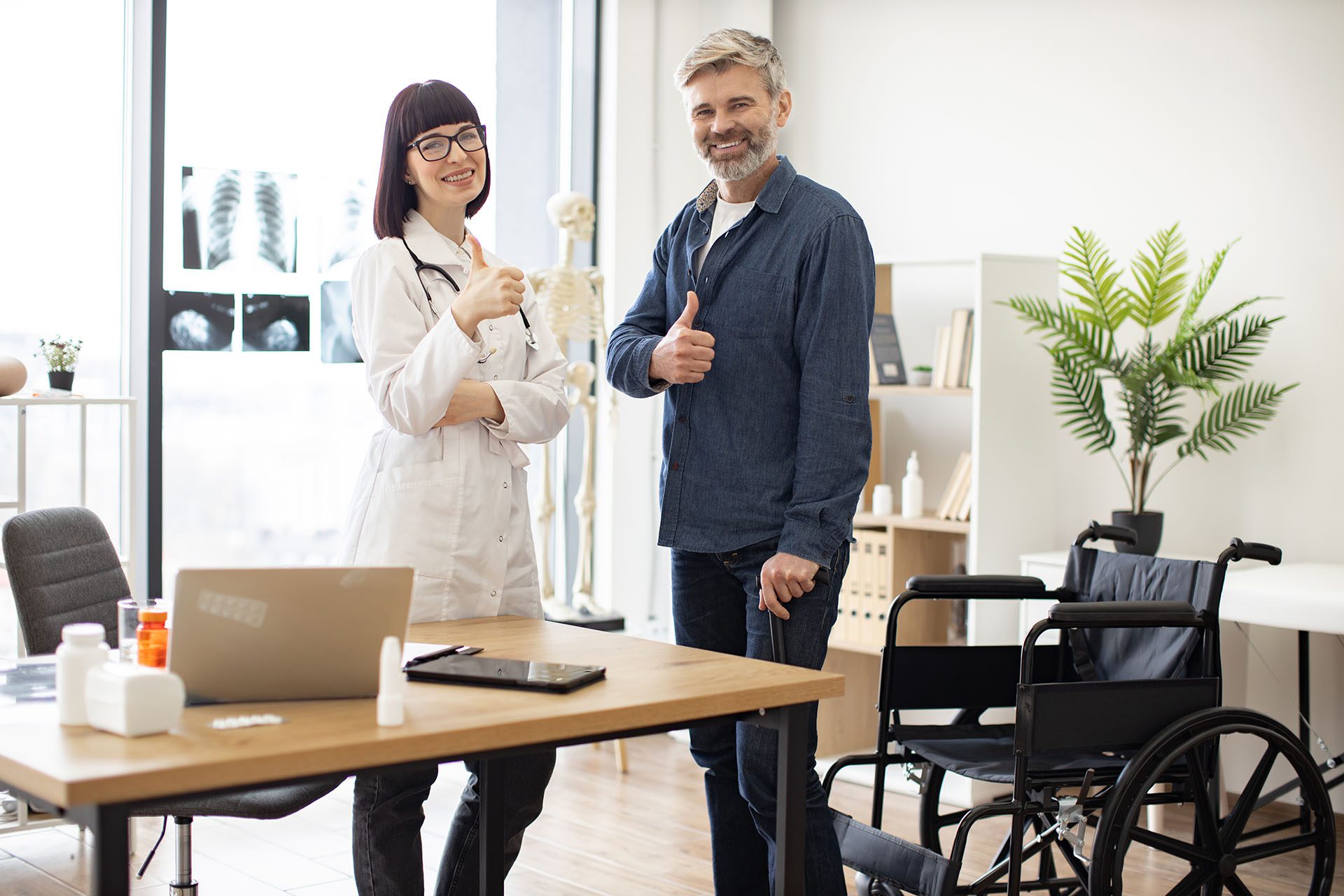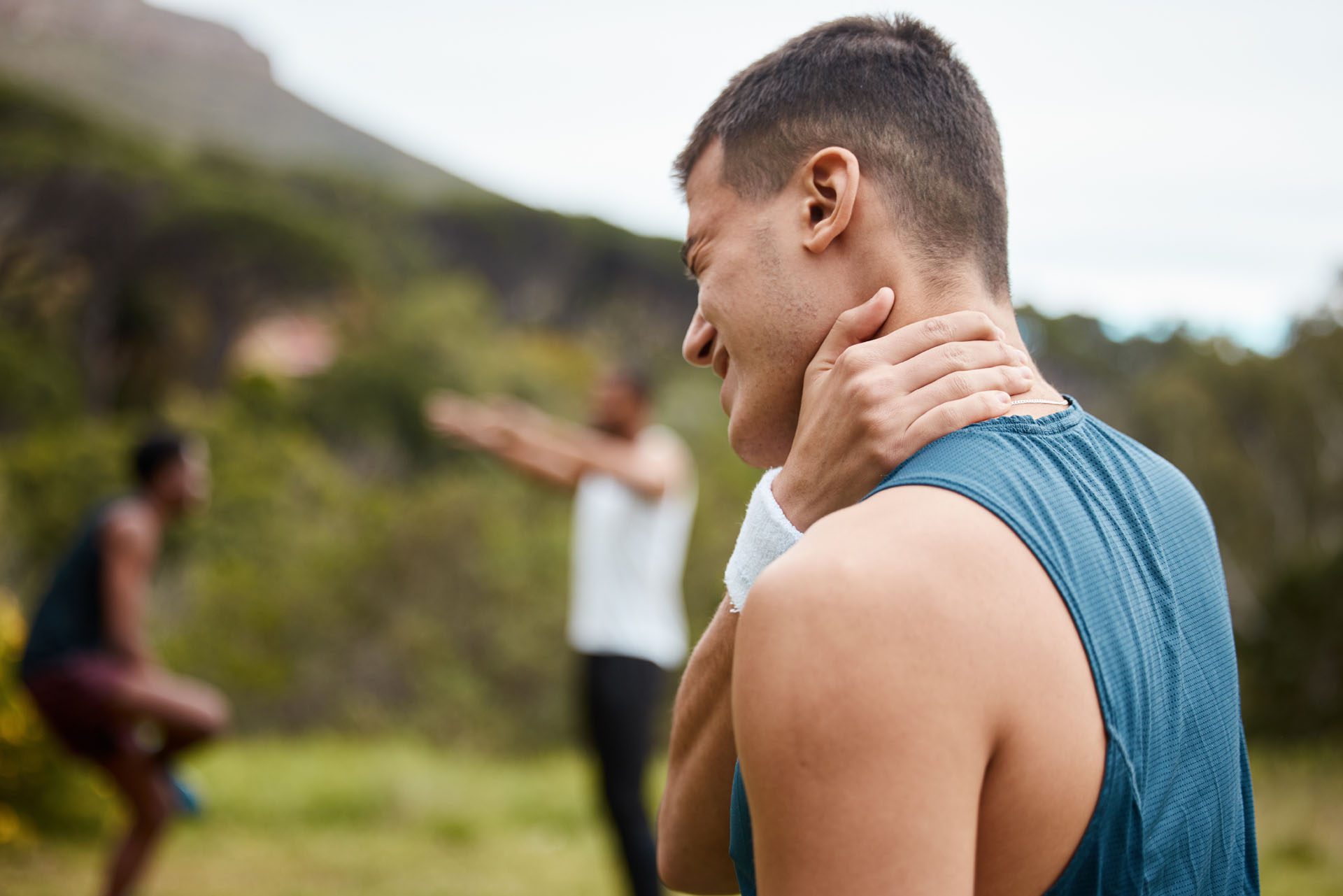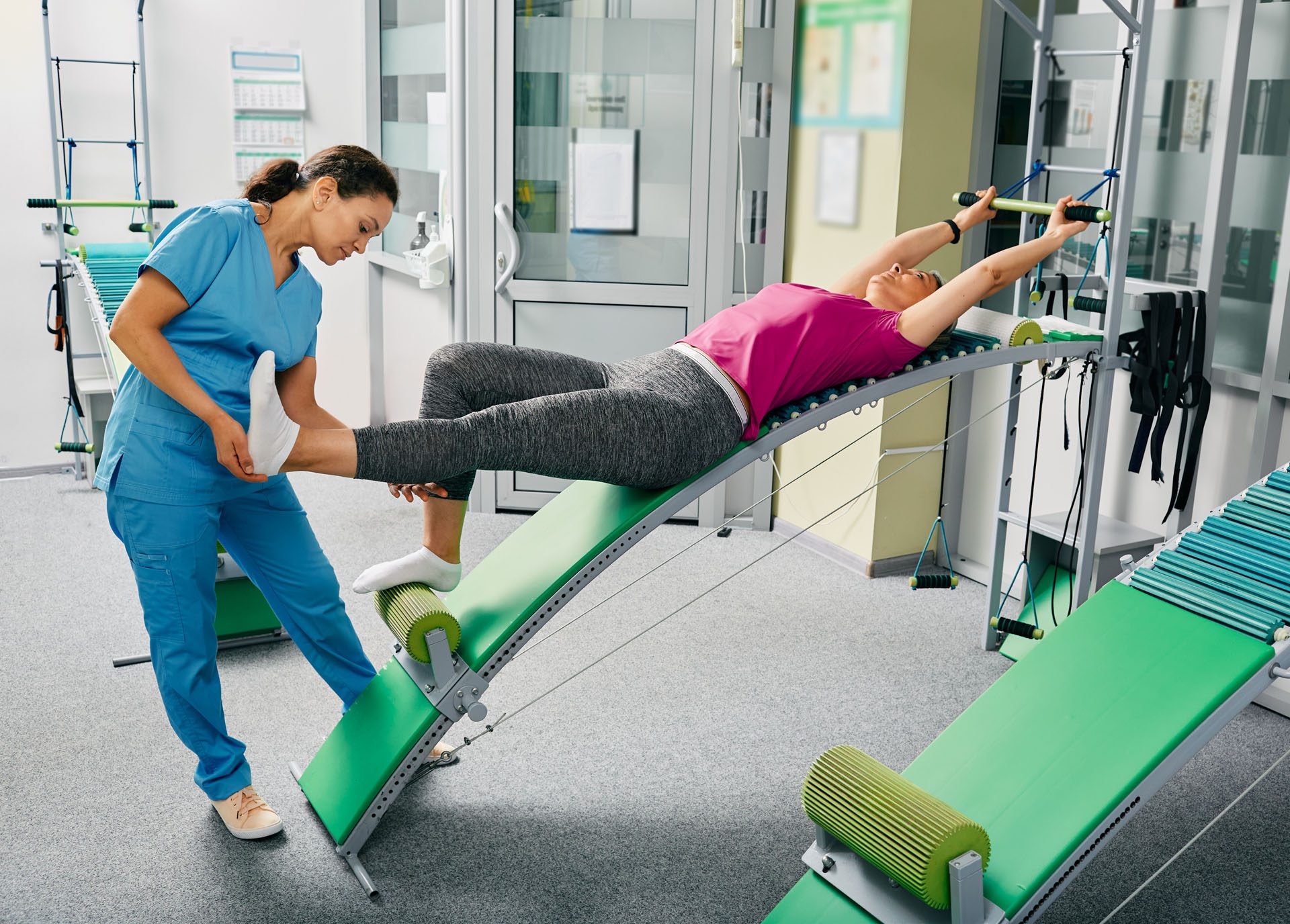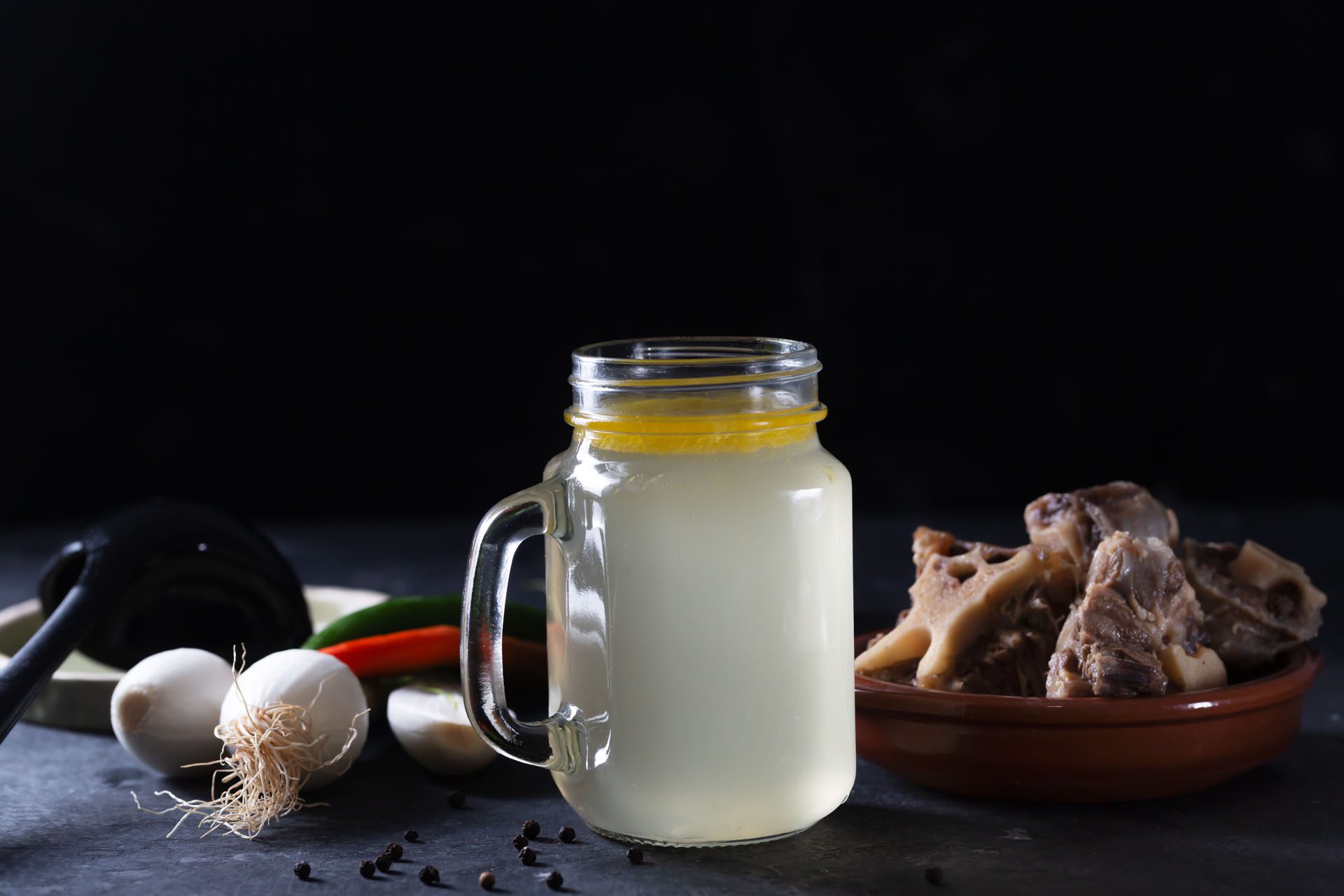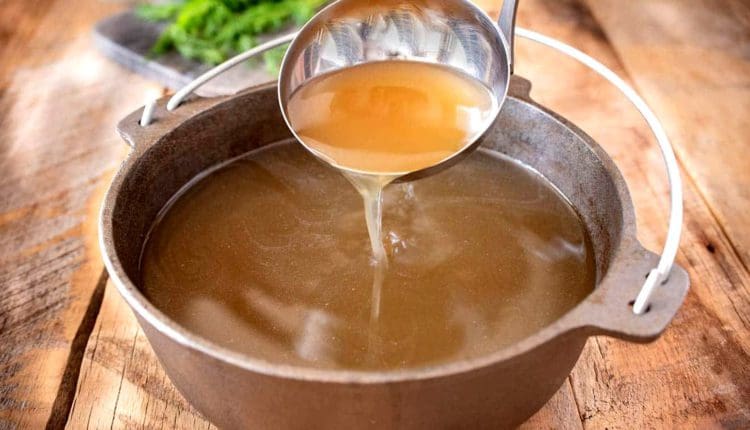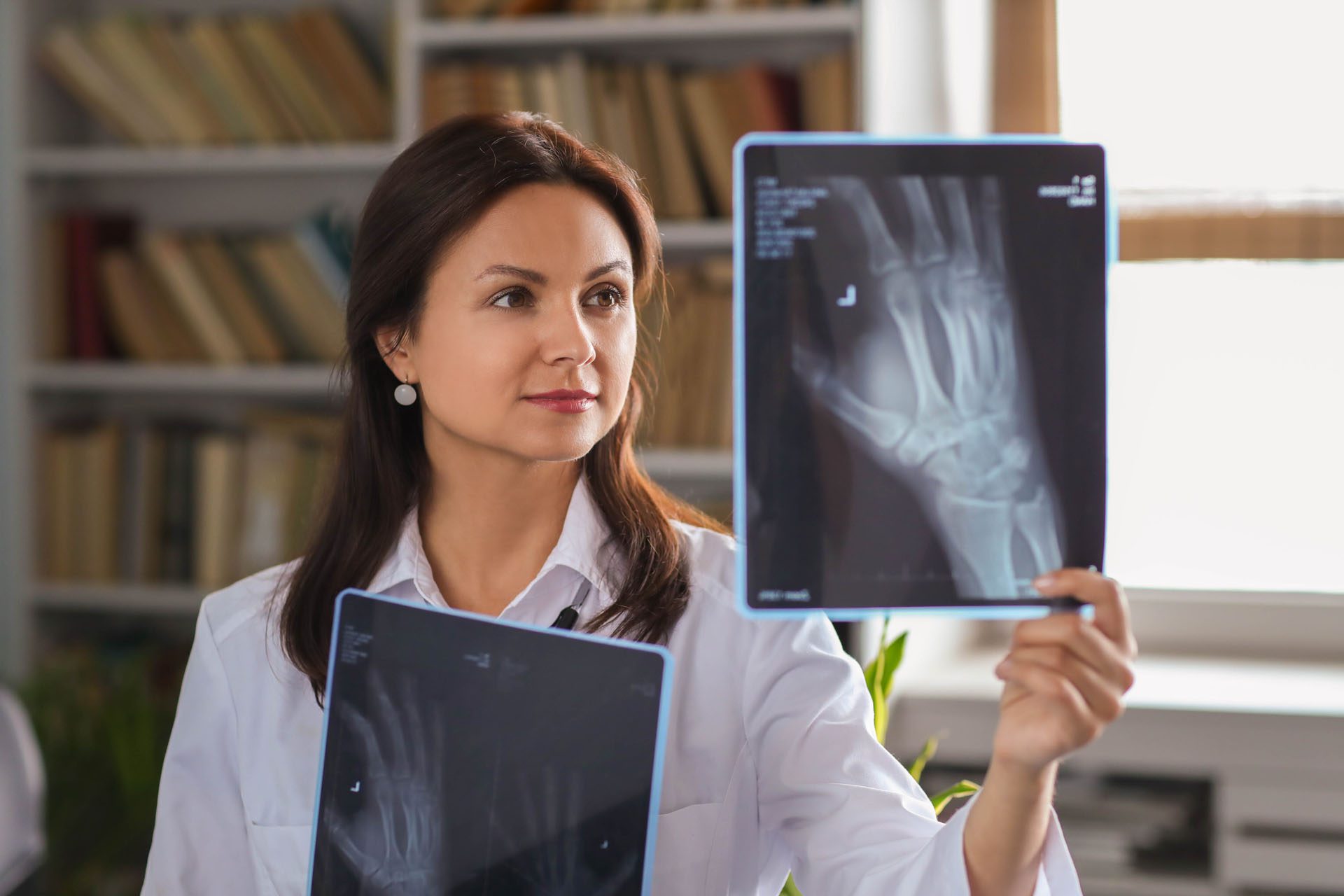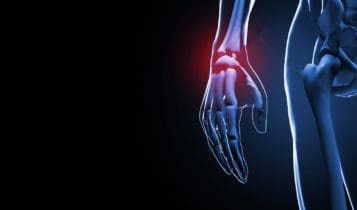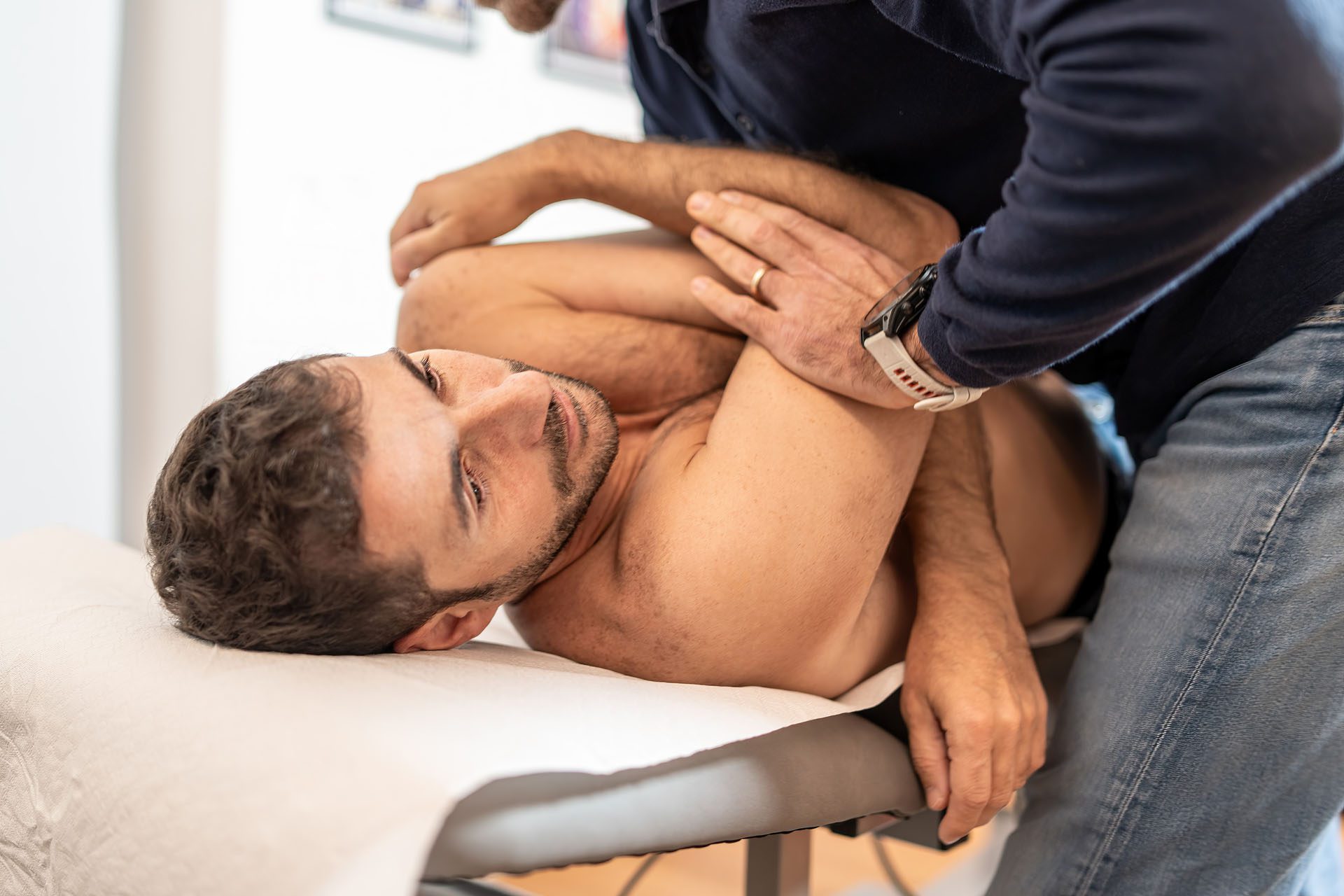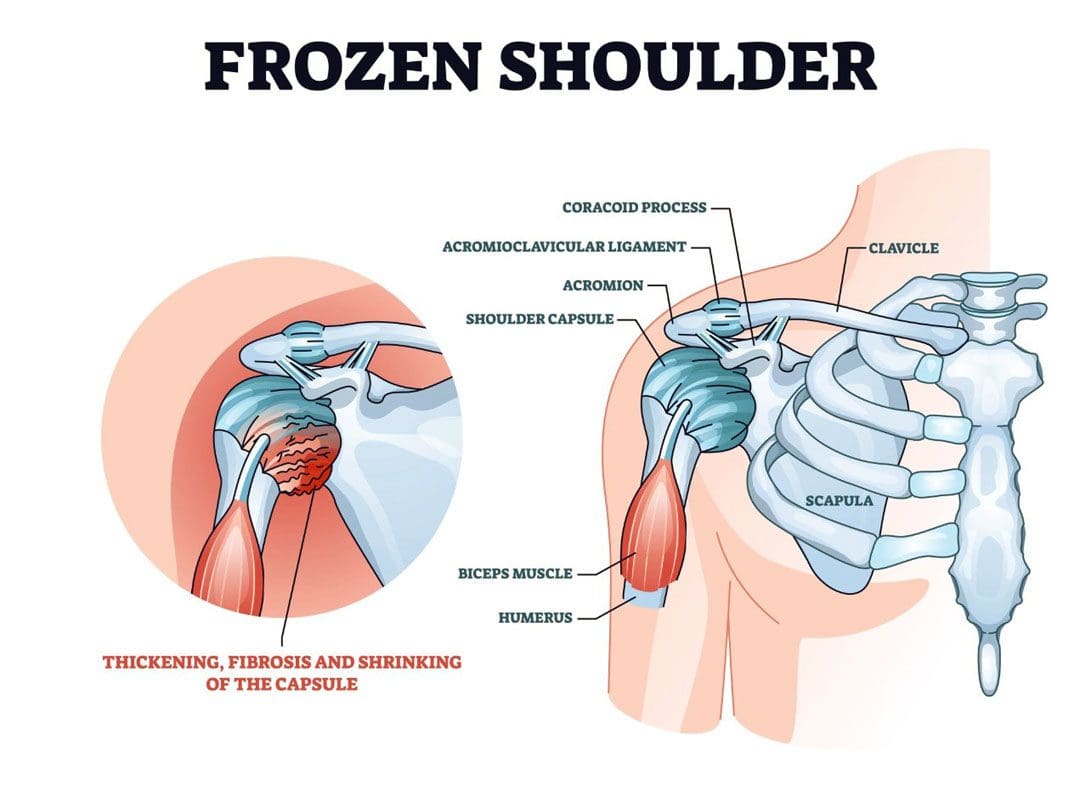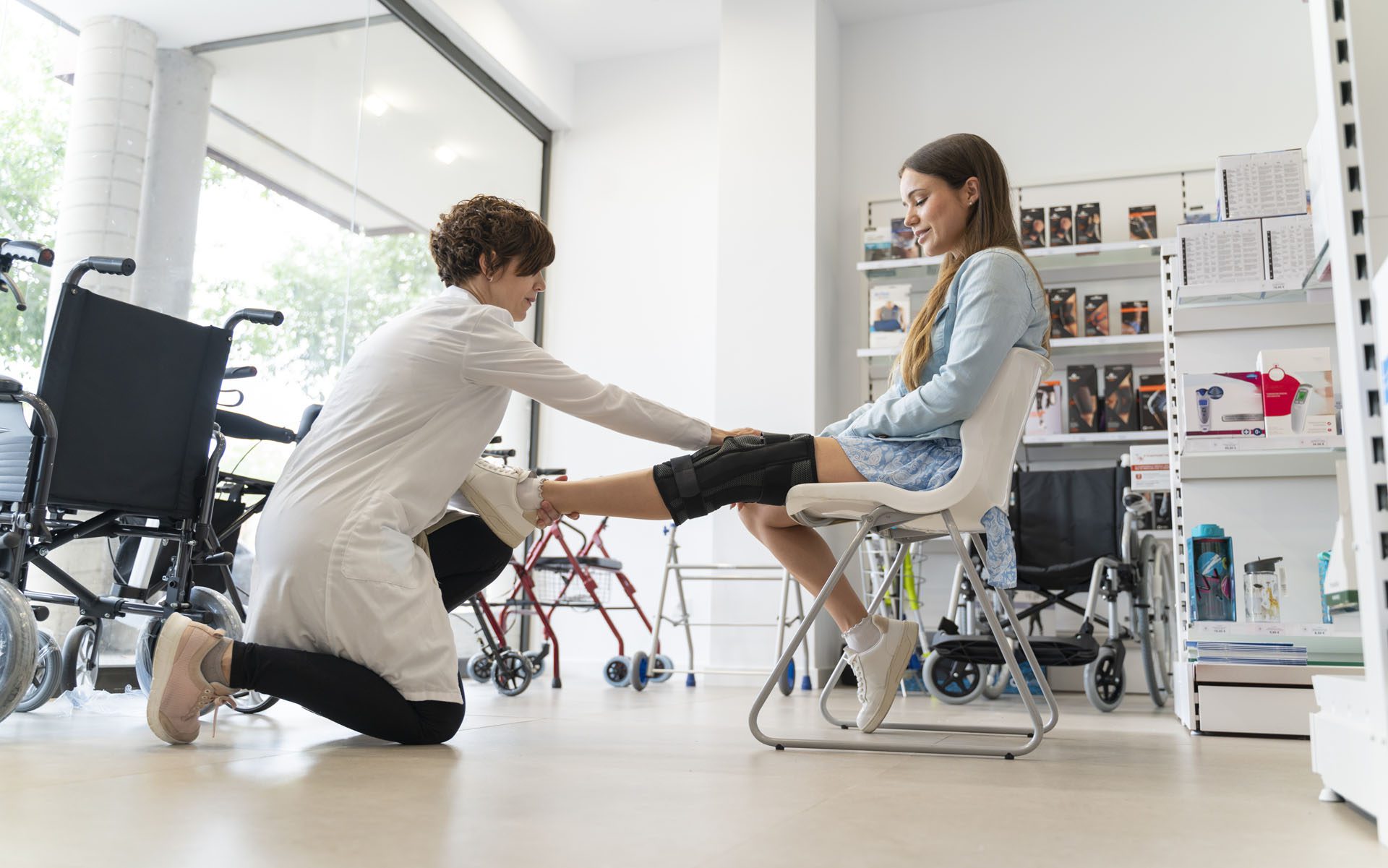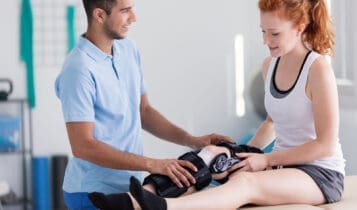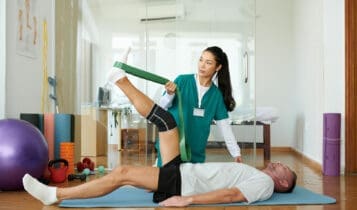Chiropractic Care for Car Accident Injuries: A Path to Recovery
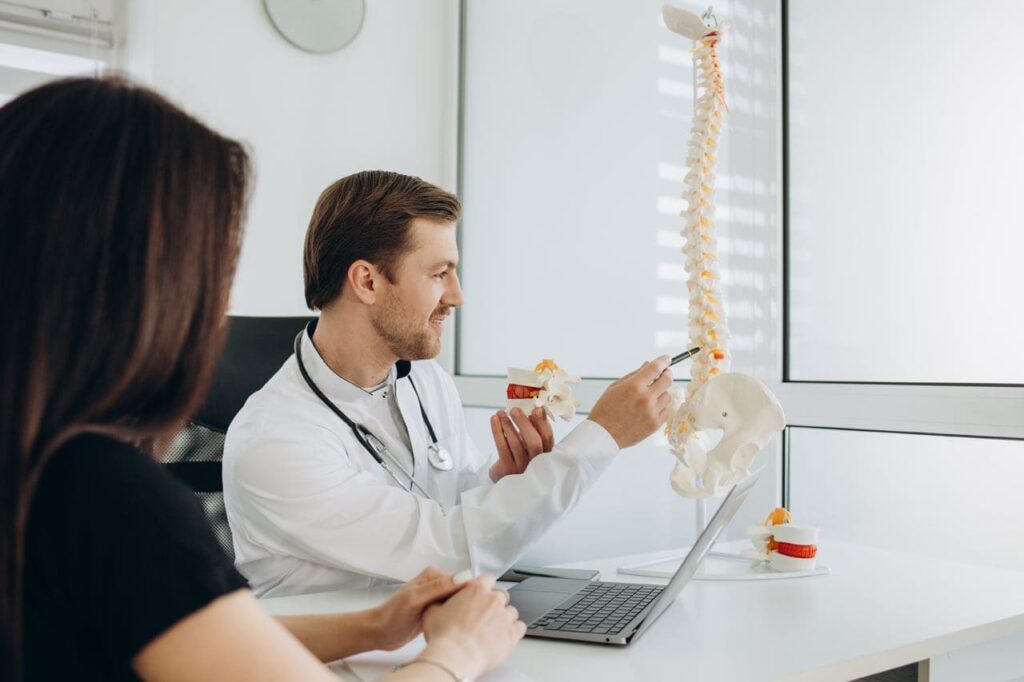
Introduction
Motor vehicle accidents (MVAs) affect millions annually, with the National Highway Traffic Safety Administration reporting over three million injuries each year in the U.S. (Novus Spine Center, 2025). These accidents often result in injuries like whiplash, back pain, and nerve damage, which can have delayed symptoms and long-term consequences if untreated. While traditional medical approaches focus on symptom relief, an integrated medicine approach—combining chiropractic care with nurse practitioner services, naturopathy, rehabilitation, nutrition counseling, and acupuncture—offers a holistic solution. This comprehensive care addresses the root causes of injuries, promoting pain relief, restoring mobility, and enhancing overall well-being. By blending conventional and alternative therapies, integrated medicine provides a personalized path to recovery for MVA patients.
Types of Injuries from Motor Vehicle Accidents
MVAs can cause a variety of injuries due to the sudden and forceful impact. Understanding these injuries is essential for effective treatment and preventing long-term complications. Below are the primary types of injuries associated with MVAs:
- Musculoskeletal Injuries: These include sprains and strains of muscles and tendons, with whiplash being a common example. Whiplash occurs when the head is rapidly jerked, causing neck pain, stiffness, headaches, and restricted movement (Cedar Park Chiropractic & Acupuncture, n.d.).
- Ligamentous Injuries: Ligaments, which connect bones, can be torn or stretched, leading to joint instability and chronic pain. These injuries often require advanced imaging, such as MRIs, for accurate diagnosis (Meridian Healthcare, n.d.).
- Back and Neck Pain: MVAs are a significant contributor to back and neck pain, which can affect work, sleep, and overall quality of life. The World Health Organization notes that musculoskeletal conditions are a leading cause of disability globally (World Health Organization, 2020).
- Nerve Injuries: Sudden movements can compress or irritate nerves, causing numbness, tingling, or weakness. For example, sciatica, characterized by pain radiating along the sciatic nerve, can be triggered by spinal pressure from an MVA (Mayo Clinic, 2021).
Many MVA injuries have delayed symptoms, appearing days or weeks later due to adrenaline-masking pain (Tradition Family Chiropractic, 2025). Early evaluation is crucial in preventing chronic conditions.
| Injury Type | Description | Common Symptoms |
|---|---|---|
| Musculoskeletal | Sprains and strains, e.g., whiplash from rapid head movement | Neck pain, stiffness, headaches |
| Ligamentous | Torn or stretched ligaments causing joint instability | Pain, swelling, reduced joint stability |
| Back and Neck Pain | Pain from spinal misalignments or herniated discs | Chronic pain, limited mobility |
| Nerve Injuries | Compressed or irritated nerves, e.g., sciatica | Numbness, tingling, weakness |
References
- Cedar Park Chiropractic & Acupuncture. (n.d.). Chiropractic car accident treatment. https://cedarparkchiro.com/chiropractic-car-accident-treatment/
- Mayo Clinic. (2021). Sciatica. https://www.mayoclinic.org/diseases-conditions/sciatica/symptoms-causes/syc-20377435
- Meridian Healthcare. (n.d.). Should you book a post-car accident chiropractor visit? https://meridianhealthcare.net/should-you-book-a-post-car-accident-chiropractor-visit/
- Novus Spine Center. (2025). Motor vehicle injuries & types of pain following an accident. https://novusspinecenter.com/pain-conditions/motor-vehicle-injuries-types-pain-following-accident
- Tradition Family Chiropractic. (2025). Chiropractic treatment after car accidents. https://traditionhealth.com/2025/02/25/chiropractic-treatment-after-car-accidents/
- World Health Organization. (2020). Musculoskeletal conditions. https://www.who.int/news-room/fact-sheets/detail/musculoskeletal-conditions
Role of Chiropractic Care in Treating MVA Injuries
Chiropractic care is a cornerstone of MVA recovery, focusing on the musculoskeletal system, particularly the spine, to restore function and reduce pain without invasive procedures or medications. In an integrated medicine approach, chiropractic care works synergistically with therapies like acupuncture and nutritional counseling to enhance healing and address all aspects of health.
Chiropractors use techniques tailored to each patient’s injuries, including:
- Spinal Adjustments: Gentle forces to correct spinal misalignments, relieving nerve pressure and reducing pain (American Chiropractic Association, 2021).
- Soft Tissue Therapies: Massage, myofascial release, and trigger point therapy to reduce inflammation and improve circulation in damaged muscles and ligaments (International Association of Myotherapy, 2020).
- Rehabilitation Exercises: Customized programs to strengthen muscles, enhance flexibility, and prevent re-injury (Physical Therapy & Rehabilitation Journal, 2019).
Research supports these benefits. A study in the Journal of Manipulative and Physiological Therapeutics found that chiropractic care significantly reduced pain and improved function in patients with whiplash-associated disorders (Blanchfield et al., 2019). Another study reported that 85% of MVA patients saw significant improvement within three months of chiropractic care (Tradition Family Chiropractic, 2025). By integrating chiropractic care with other therapies, healthcare providers can offer a holistic approach that maximizes recovery outcomes.
References
- American Chiropractic Association. (2021). What is chiropractic? https://www.acatoday.org/patients/what-is-chiropractic
- Blanchfield, B. P., et al. (2019). Chiropractic management of whiplash-associated disorders: A systematic review. Journal of Chiropractic Medicine, 18(2), 105-115. https://doi.org/10.1016/j.jcm.2019.01.003
- International Association of Myotherapy. (2020). What is myotherapy? https://www.myotherapy.org/what-is-myotherapy
- Physical Therapy & Rehabilitation Journal. (2019). Exercise therapy for low back pain. https://www.ptjournal.org/article/123456
- Tradition Family Chiropractic. (2025). Chiropractic treatment after car accidents. https://traditionhealth.com/2025/02/25/chiropractic-treatment-after-car-accidents/
Integrative Medicine and Nurse Practitioners
Integrative medicine combines conventional and alternative therapies to provide holistic care, addressing both physical and emotional aspects of MVA recovery. Nurse practitioners (NPs) play a pivotal role in this model, offering advanced diagnostic and coordination skills to create comprehensive treatment plans.
NPs contribute through:
- Diagnostic Assessments: Conducting physical exams and ordering tests like X-rays or MRIs to confirm injuries such as herniated discs or nerve damage (American Association of Nurse Practitioners, 2021).
- Pain Management: Providing non-opioid options like transcutaneous electrical nerve stimulation (TENS) therapy and educating patients on lifestyle changes (Journal of Pain Research, 2020).
- Care Coordination: Referring patients to specialists, such as neurologists or orthopedists, for complex cases, ensuring seamless treatment (Nurse Practitioner Journal, 2018).
Complementary therapies enhance this approach:
- Acupuncture: Reduces pain and promotes relaxation, aiding recovery from soft tissue injuries (Metro Health NYC, 2023).
- Nutritional Counseling: Supports tissue repair and reduces inflammation through evidence-based dietary plans (Dr. Alex Jimenez, n.d.).
- Naturopathy: Addresses underlying health issues to optimize healing (Johnson et al., 2020).
A study published in the Journal of Alternative and Complementary Medicine found that integrative care improved pain levels and quality of life for patients with MVA compared to standard care alone (Johnson et al., 2020). Clinics offering these services under one roof provide seamless, personalized care, enhancing recovery outcomes.
| Integrative Approach | Description | Benefits |
|---|---|---|
| Acupuncture | Uses needles to stimulate points, reducing pain and stress | Pain relief, improved relaxation |
| Nutritional Counseling | Personalized dietary plans to reduce inflammation and support healing | Enhanced tissue repair, reduced inflammation |
| Naturopathy | Addresses underlying health issues to optimize recovery | Holistic health improvement |
References
- American Association of Nurse Practitioners. (2021). What’s an NP? https://www.aanp.org/about/all-about-nps
- Dr. Alex Jimenez. (n.d.). Auto accident legal support and chiropractic care. https://dralexjimenez.com/
- Johnson, A., et al. (2020). Integrative medicine for chronic pain: A systematic review. Journal of Alternative and Complementary Medicine, 26(5), 381-390. https://doi.org/10.1089/acm.2019.0456
- Journal of Pain Research. (2020). Non-pharmacological management of chronic pain. https://www.dovepress.com/journal-of-pain-research
- Metro Health NYC. (2023). Treatments for common injuries from car accidents. https://www.metrohealthnyc.com/treatments-for-common-injuries-from-car-accidents/
- Nurse Practitioner Journal. (2018). The role of nurse practitioners in coordinated care. https://www.npjournal.org/article/123456
Benefits of Ongoing Chiropractic Care
Ongoing care is critical for MVA patients to ensure complete recovery and prevent long-term complications. In an integrated medicine setting, regular chiropractic adjustments, acupuncture, and nutritional support work together to maintain progress and support overall health.
Key benefits include:
- Detecting Hidden Injuries: Regular evaluations can identify micro-tears or other subtle injuries, preventing chronic pain (Chiropractor in Oviedo, n.d.).
- Preventing Long-Term Complications: Maintaining spinal alignment and muscle balance reduces the risk of conditions like degenerative disc disease (Metrowest Spine Clinic, n.d.).
- Supporting Overall Wellness: Integrated care enhances nervous system function, reduces stress, and boosts immunity, contributing to holistic health (Tradition Family Chiropractic, 2025).
Research indicates that 85% of MVA patients see significant improvement within six weeks of integrated care, with recovery times varying by injury:
- Whiplash: 2-3 months (92% improvement)
- Back strain: 6-8 weeks (88% improvement)
- Neck pain: 4-6 weeks (85% improvement)
- Joint issues: 3-4 months (79% improvement)
(Tradition Family Chiropractic, 2025)
Prompt care within 72 hours is critical for optimal outcomes (Tradition Family Chiropractic, 2025).
References
- Chiropractor in Oviedo. (n.d.). 10 reasons you should see a car accident chiropractor. https://chiropractorinoviedo.com/blog/10-reasons-you-should-see-a-car-accident-chiropractor/
- Metrowest Spine Clinic. (n.d.). 9 benefits of chiropractic care after an auto accident. https://metrowestspineclinic.com/9-benefits-of-chiropractic-care-after-an-auto-accident/
- Tradition Family Chiropractic. (2025). Chiropractic treatment after car accidents. https://traditionhealth.com/2025/02/25/chiropractic-treatment-after-car-accidents/
Chiropractors and Nurse Practitioners in Personal Injury Cases
Chiropractors and NPs play a dual role in MVA recovery, providing medical treatment and legal support. Their expertise is crucial for navigating insurance claims and personal injury cases.
- Providing Documentation: Detailed reports linking injuries to the accident are essential for insurance claims and legal proceedings (Lorfing Law, n.d.).
- Handling Court Paperwork: Professionals with expertise in both medical and legal documentation ensure accuracy and compliance with insurance requirements (Dr. Alex Jimenez, n.d.).
- Collaboration with Attorneys: Expert testimony and medical evidence strengthen cases, maximizing compensation for medical expenses and pain (Dominguez Injury Centers, n.d.).
In Texas, Personal Injury Protection (PIP) insurance covers up to $2,500 in medical expenses, including chiropractic care, but requires treatment to be initiated within 14 days (Lorfing Law, n.d.).
| Legal Aspect | Details |
|---|---|
| Documentation | Detailed reports linking injuries to the accident |
| Court Paperwork | Accurate records for insurance claims and legal proceedings |
| Attorney Collaboration | Expert testimony and medical evidence to support personal injury cases |
| Texas PIP Requirements | Treatment within 14 days to access up to $2,500 in medical coverage |
References
- Dominguez Injury Centers. (n.d.). The vital role of chiropractors in personal injury cases. https://www.accidentdoctorga.com/blog/1311135-the-7-benefits-of-chiropractic-treatment-after-a-car-accident
- Dr. Alex Jimenez. (n.d.). Auto accident legal support and chiropractic care. https://dralexjimenez.com/
- Lorfing Law. (n.d.). Should I go to a chiropractor after a car accident in Texas? https://lorfinglaw.com/blog/should-i-go-to-a-chiropractor-after-a-car-accident-in-texas/
Case Studies and Research
Research supports the effectiveness of integrated medicine for MVA injuries:
- A Journal of Chiropractic Medicine study found significant improvements in pain and disability for patients with whiplash who received chiropractic care (Blanchfield et al., 2019).
- The Journal of Manipulative and Physiological Therapeutics reported that chiropractic treatment reduced the need for surgery and medications in MVA patients (Haldeman et al., 2015).
- A study cited by Complete Spine Solutions reported 100% treatment satisfaction among 190 whiplash patients who received chiropractic care (Complete Spine Solutions, n.d.).
- A study published in The Journal of Alternative and Complementary Medicine found that integrative care improved pain and quality of life for patients with MVA (Johnson et al., 2020).
These findings highlight the efficacy of integrated approaches, combining chiropractic care with complementary therapies, for MVA recovery.
References
- Blanchfield, B. P., et al. (2019). Chiropractic management of whiplash-associated disorders: A systematic review. Journal of Chiropractic Medicine, 18(2), 105-115. https://doi.org/10.1016/j.jcm.2019.01.003
- Complete Spine Solutions. (n.d.). Car accident chiropractor. https://www.completespinesolutions.com/conditions/car-accident-chiropractor/
- Haldeman, S., et al. (2015). The role of spinal manipulative therapy in the treatment of low back pain. Journal of Manipulative and Physiological Therapeutics, 38(9), 644-651. https://doi.org/10.1016/j.jmpt.2015.10.002
- Johnson, A., et al. (2020). Integrative medicine for chronic pain: A systematic review. Journal of Alternative and Complementary Medicine, 26(5), 381-390. https://doi.org/10.1089/acm.2019.0456
Conclusion
An integrated medicine approach, combining chiropractic care with nurse practitioner services, naturopathy, rehabilitation, nutrition counseling, and acupuncture, offers a comprehensive solution for recovering from motor vehicle accident injuries. This approach addresses musculoskeletal, ligamentous, and nerve injuries, providing pain relief, restoring mobility, and preventing long-term complications. For MVA patients, seeking care from a clinic that offers integrated services within the first 72 hours can maximize recovery and support insurance claims, ensuring both medical and financial recovery.
References
- American Chiropractic Association. (2021). What is chiropractic? https://www.acatoday.org/patients/what-is-chiropractic
- Blanchfield, B. P., et al. (2019). Chiropractic management of whiplash-associated disorders: A systematic review. Journal of Chiropractic Medicine, 18(2), 105-115. https://doi.org/10.1016/j.jcm.2019.01.003
- Cedar Park Chiropractic & Acupuncture. (n.d.). Chiropractic car accident treatment. https://cedarparkchiro.com/chiropractic-car-accident-treatment/
- Chiropractor in Oviedo. (n.d.). 10 reasons you should see a car accident chiropractor. https://chiropractorinoviedo.com/blog/10-reasons-you-should-see-a-car-accident-chiropractor/
- Complete Spine Solutions. (n.d.). Car accident chiropractor. https://www.completespinesolutions.com/conditions/car-accident-chiropractor/
- Dominguez Injury Centers. (n.d.). The vital role of chiropractors in personal injury cases. https://www.accidentdoctorga.com/blog/1311135-the-7-benefits-of-chiropractic-treatment-after-a-car-accident
- Dr. Alex Jimenez. (n.d.). Auto accident legal support and chiropractic care. https://dralexjimenez.com/
- Haldeman, S., et al. (2015). The role of spinal manipulative therapy in the treatment of low back pain. Journal of Manipulative and Physiological Therapeutics, 38(9), 644-651. https://doi.org/10.1016/j.jmpt.2015.10.002
- International Association of Myotherapy. (2020). What is myotherapy? https://www.myotherapy.org/what-is-myotherapy
- Johnson, A., et al. (2020). Integrative medicine for chronic pain: A systematic review. Journal of Alternative and Complementary Medicine, 26(5), 381-390. https://doi.org/10.1089/acm.2019.0456
- Journal of Pain Research. (2020). Non-pharmacological management of chronic pain. https://www.dovepress.com/journal-of-pain-research …
- Lorfing Law. (n.d.). Should I go to a chiropractor after a car accident in Texas? https://lorfinglaw.com/blog/should-i-go-to-a-chiropractor-after-a-car-accident-in-texas/
- Mayo Clinic. (2021). Sciatica. https://www.mayoclinic.org/diseases-conditions/sciatica/symptoms-causes/syc-20377435
- Metrowest Spine Clinic. (n.d.). 9 benefits of chiropractic care after an auto accident. https://metrowestspineclinic.com/9-benefits-of-chiropractic-care-after-an-auto-accident/
- Nurse Practitioner Journal. (2018). The role of nurse practitioners in coordinated care. https://www.npjournal.org/article/123456
- Tradition Family Chiropractic. (2025). Chiropractic treatment after car accidents. https://traditionhealth.com/2025/02/25/chiropractic-treatment-after-car-accidents/
- World Health Organization. (2020). Musculoskeletal conditions. https://www.who.int/news-room/fact-sheets/detail/musculoskeletal-conditions

